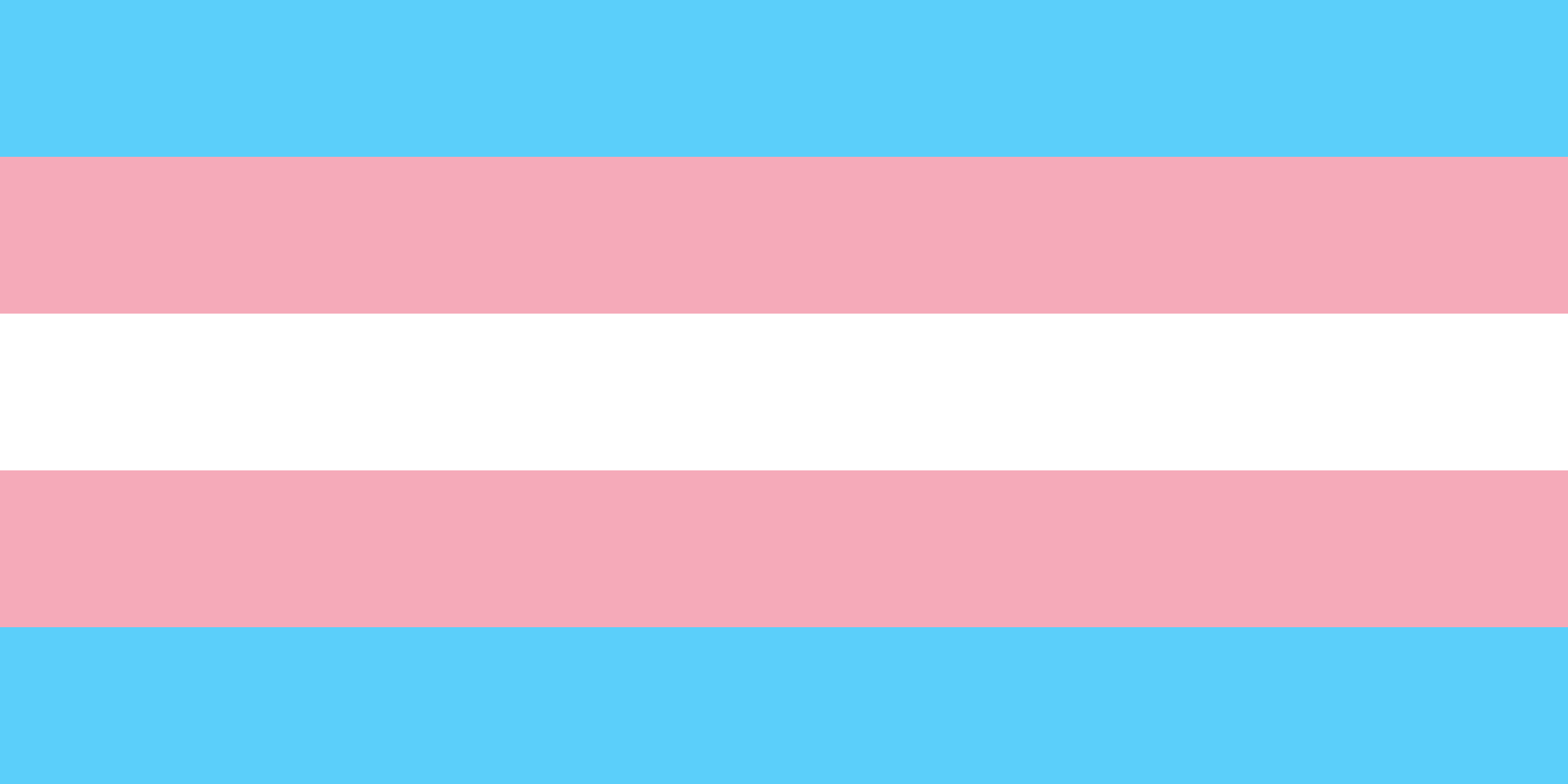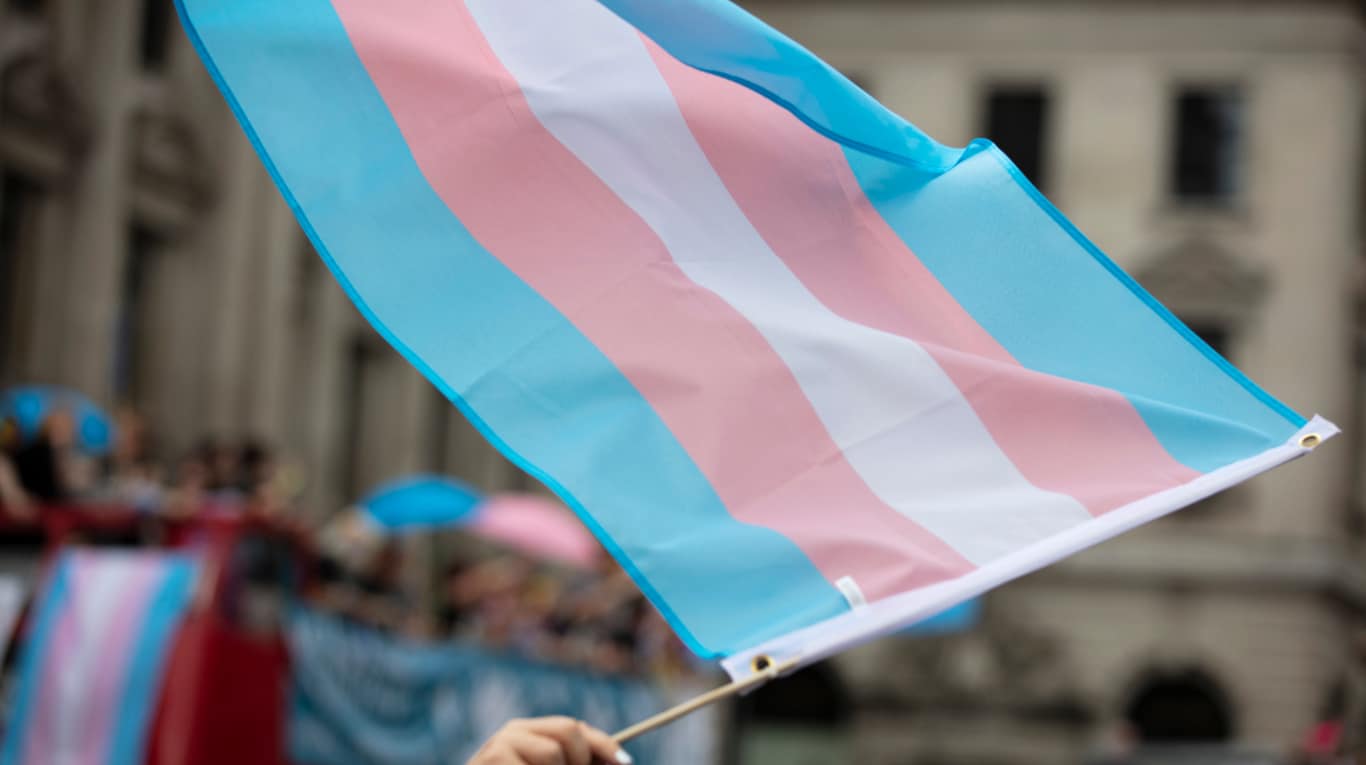
As has always happened throughout history, flags are a representation for people. Each of the flags has a meaning for a certain type of groups. And these same ones are associated with a type of life, behavior or references. Whether in a more relaxed aspect or not, but above all wanting to represent and group something specific. This happens between countries, communities and even small populations.
But it also happens between tastes, ways of life and styles. Many of them are born to mark an identity before a society that mistreats it, as is the case. The origin of the Trans flag is due to the hatred, discrimination and violence that trans people received when it was created and that they still continue to receive. Now, at least, they have visibility and a common objective, under this banner that we analyze in this article.
The origin of the Trans flag.
The origin of the day dates back to 1998 and was born in the United States, more specifically in San Francisco, California.. This day was created by activist, graphic designer, columnist, activist, and transgender Gwendolyn Ann Smith. In an agreement he had with the Radio and Television Discrimination Observatory. Both the creation of the flag and the origin of the date chosen as Trans Day, November 20, has a very specific origin.
And it is that, according to Gwendolyn, this day was chosen due to the murder suffered by Rita Hester that same day due to being an African-American transgender woman. Also, it was an unsolved crime. Therefore, justice could not be done with the person or persons guilty of her murder. But that, even Amnesty International declares it a hate murder for being a transsexual person.
So the date was key to identify an entire community to defend their right to feel as they want. To have a full life without being judged for sex change or for not identifying with the sex you have at the time you are born. But it was not until 1999, a year after the creation of this day, that the flag was created. The flag is created by Monica Helm, a trans woman.
Meaning of the flag and when it comes to light

The flag was born in 1999 created by Monica, but it was not until the year 2000, in a demonstration where it became known. This march takes place in Phoenix, Arizona. In the south of the United States and in an emblematic place, since it is one of the most retrograde areas of the United States. Border with Mexico and where there are still laws today that are controversial compared to other states.
The flag is composed of five lines and only three colors. As we can see in the image, the three colors are: Blue, Pink and White. In addition, these colors have a soft tone, which gives the flag a sensation of greater luminosity. These tones and colors are chosen according to the canons that are associated with babies when they are born. Since blue colors are assigned to the boy and pink colors to the girl.
The central white color represents all the other people who do not feel identified with these default colors in our lives. According to Monica:
«For those people who were born intersex, who are in transition or consider that they have a neutral or indefinite gender»
In addition, they also asked for the order. Since the order that appears, in whatever position you place the flag, is blue. That as we have commented represents the "boy". But Monica said that was not something important. That any color was always appropriate and that for the trans community, it means the correction of their lives. So it is not important to see if one is on top of the other, what is important is what represents it.
another trans flag

We've all seen this flag lately. We have recognized this and many others that represent, for example, the LGTB+ community. Which also includes the colors of the trans flag of course. But before this flag became official in most of the world, there was another person who designed another flag to represent the interests of trans people. This other flag is created by Jennifer Holland two years later.
In 2002, Jennifer brings to light a flag that wants to express the same thing, although with different shades. What happens is that when he shows his flag, with the intention of creating one to defend the rights of trans people, they let him know that there is already one created shortly before. According to herself, she said she did not know that flag and that is why she invested her time in creating one.
This flag is composed of five lines like the previous one. Only this time the colors are not repeated. In fact, at the top is the pink line that represents women. And at the bottom, the blue line that represents men. The other three remaining lines represent diversity in three different purple hues. For those people who do not feel they are men or women either because of a neutral gender or who have not yet defined it.
Trans Law in Spain
At the end of the year 2022, more than 20 years after the birth of this flag. A country like Spain has established a law, called the “Trans Law” to establish basic rights at the country level for trans people. This law seeks, effectively, Spanish society to achieve equality among all people. Something that was not explicit before for trans people or people from the LGTB+ collective.
This law includes key points so that this can happen. Like, for example, self-determining your own gender. In this way, you do not need any doctor through a report or any judge to dictate what you can feel or not. Another important point is the depathologization of trans people. In this way, trans people will never again be treated as sick people. Among many others that can be read here.